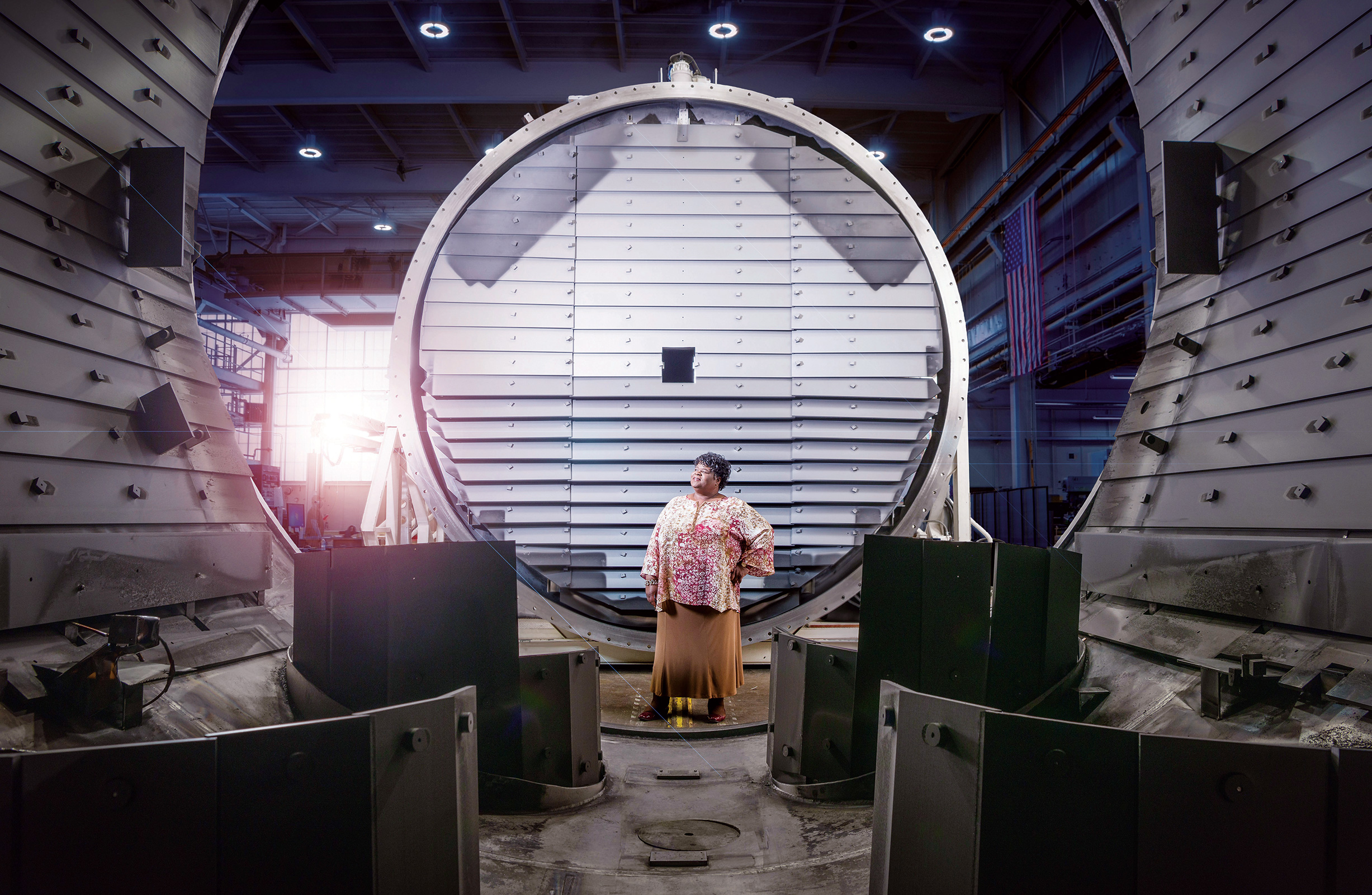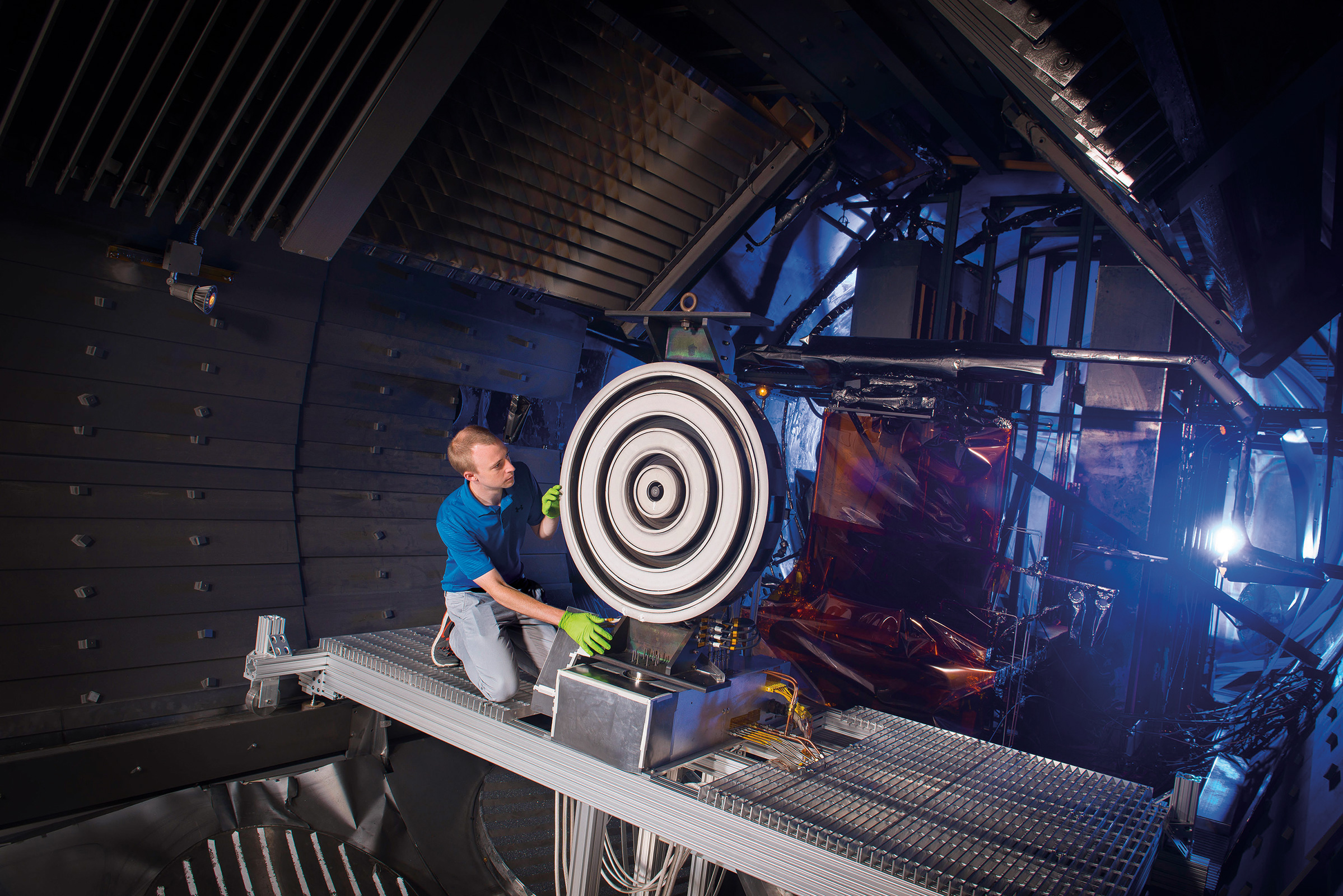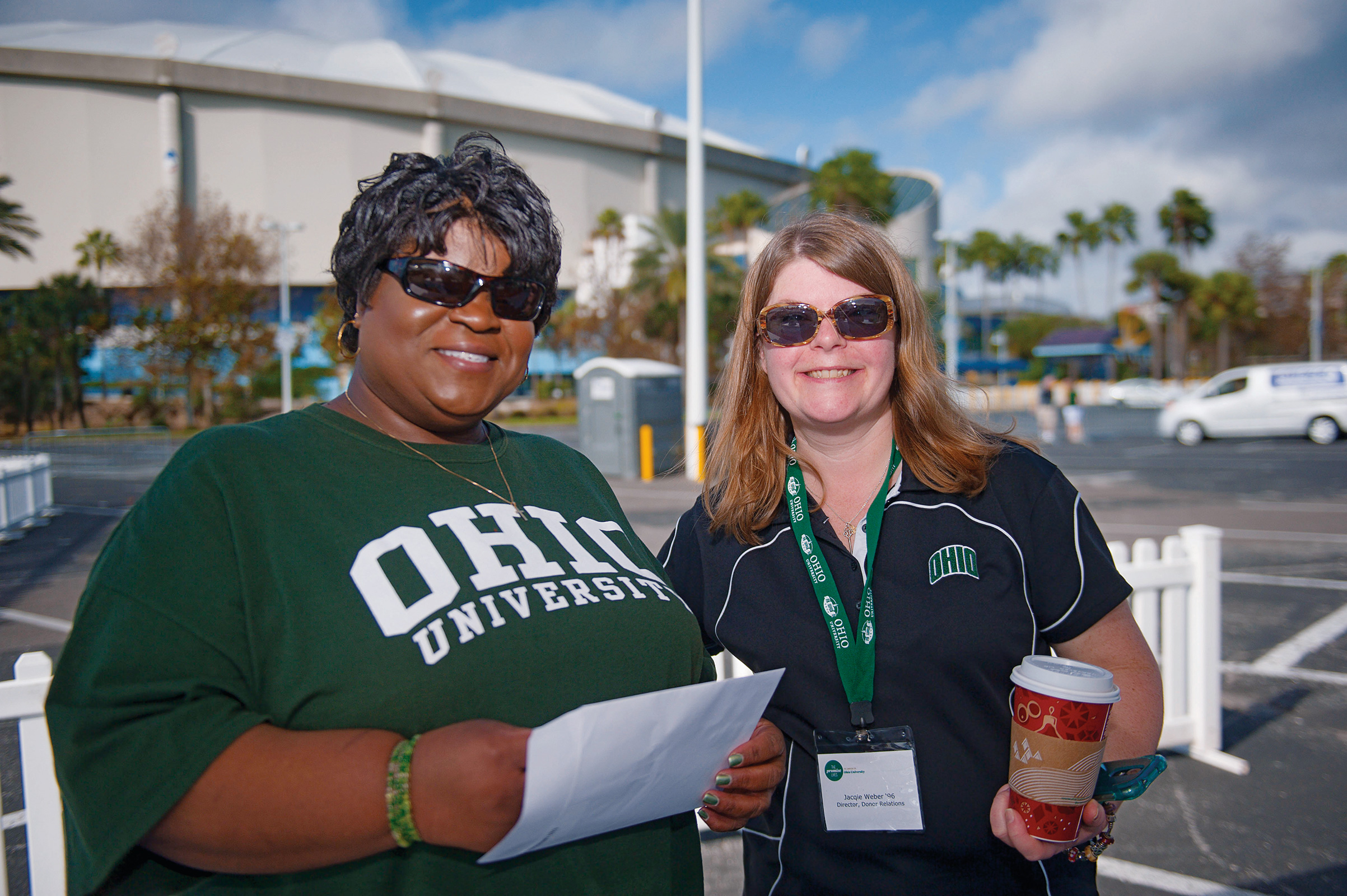
Programmed for generosity
STEM-ulated by curiosity, Russ College alumna, NASA Glenn Research Center supervisory aerospace engineer, and deputy division chiefCynthia Calhoun, BSEE '88, took a giant leap to explore the unknown — now she strives to help others do the same.
STEM-ulated by curiosity, Russ College alumna, NASA Glenn Research Center supervisory aerospace engineer, and deputy division chief Cynthia Calhoun, BSEE '88, took a giant leap to explore the unknown — now she strives to help others do the same.
The first mention of STEM was during the Sputnik Era from former Presidents Dwight D. Eisenhower and John F. Kennedy, who challenged Americans to become thought leaders in the fields. However, the push for STEM education only became prevalent in the early 2000s. Several published reports detailed the dire need for STEM education in the U.S., and former President Barack Obama's 2009 Educate to Innovate Initiative announced goals to increase U.S. student science and math achievements.
After years of exploring her interests and pursuing her passions, STEM is a way of life for Calhoun. At NASA and beyond, she strives to be the mentor she never had by inspiring underrepresented populations to pursue engineering and technology.
Developed to program
Calhoun, a Dayton, Ohio native, recalls being a curiously minded child. She spent her time dismantling electronics and exploring nature so she could learn about the world around her.
Because of the lack of STEM outreach while Calhoun was growing up, she continued to pursue her curiosities and forge her own path.

I NEVER THOUGHT — AS AN ELECTRONICS ENGINEER WORKING AT NEWARK AIR FORCE BASE IN 1994 — THAT I WOULD EVER BE AN AEROSPACE ENGINEER SUPERVISOR WORKING FOR NASA.
Cynthia Calhoun, BSEE '88
While most young women at the John H. Patterson Career Center took office and accounting courses, Calhoun explored hands-on learning. She started with drafting and carpentry, for which she won an outstanding student award, then branched into commercial art. Learning that it wasn't for her is what set her on her path.
The first couple of weeks, I realized you got ink on everything and being a girly-girl, I didn't want ink all over my clothes,
Calhoun says with a chuckle. I spoke to the guidance counselor, who showed me the vocation list. I had no idea what electronics were, so I took it – and fell in love. As they say, the rest was history.
She spent the remainder of high school studying and working in electronics and planned to continue the work she loved as an electronics technician following graduation. However, a conversation about college with her mother's boss changed everything. Engineering, he explained, would take her much further.

Calhoun enrolled in electrical engineering at Ohio University. She immersed herself in campus life and extracurricular activities, joining the National Society of Black Engineers (NSBE) and the Black Student Cultural Programming Board, where she was secretary and treasurer.
As an African American woman studying in a field largely dominated by white males, Calhoun says her experience at OHIO helped her prepare for the workforce.
One of the realities that I understood pursuing an engineering degree was that once I got into a career, I'd most likely be the only minority in the room. It just helped me get used to that, to be honest, and helped me understand how to interact with my counterparts,
she says.
The road to NASA
Following graduation, Calhoun developed automated test systems at Newark Air Force Base before moving to Kelly Air Force Base in San Antonio, Texas, where she worked with a team to advance the test systems by adding artificial intelligence.
Kelly Air Force Base was set to be closed by the U.S. Department of Defense in 1995, so she searched for other opportunities and found a computer engineer posting for NASA.
She got the job — at NASA's Software Independent Verification and Validation (IV&V) Facility in Fairmont, West Virginia, evaluating software that ran in the space shuttles and determining ways to improve it. As she transitioned to NASA Glenn Research Center in Cleveland, Ohio, she built upon her IV&V work while implementing software assurance and risk management to support microgravity experiments for use in space shuttles or the space station.

The greatest part of working for NASA is being able to be a part of and witness such massive, intricate, and complex systems come together and work,
she says. Starting with the concept of operations, to developing build and performance requirements, to designing, building, and testing the system, to full operations — many people, ideas, and moving parts are involved.
Fellow Bobcat Timothy Ferlin, NASA Glenn chief safety officer, and power and propulsion element safety and mission assurance director, has worked closely with Calhoun for four years. She has served as his mentor and went above and beyond to nominate him for leadership and training programs, helping him achieve his professional goals.
She is a consummate professional, always willing to sit down and help others out, and is typically one of the first ones in and last ones out the door during the week,
Ferlin says. If there is one thing I could take away from working with Cynthia, it would be to remain happy and positive no matter what happens at work. Her calm demeanor is a positive influence on our organization.
Calculating success
As a supervisory aerospace engineer and deputy division chief at NASA, much of Calhoun's work focuses on calculating outcomes and ensuring success — from system reliability and safety to budgeting manpower. Outside of work, she adds to the success of others through her relentless efforts to inspire populations underrepresented and underserved in STEM.
Calhoun's list of volunteer and outreach activities is longer than her resume, illustrating her generosity and willingness to serve others.

CYNTHIA IS A VERY SPECIAL ALUMNA OF OHIO. SHE IS ENGAGED WITH HER ALMA MATER AND HAS GIVEN BACK IN ALL THE TRADITIONAL CAPACITIES — TIME, TALENT AND TREASURE.
Jacquelin Weber, Ohio University Senior Director of Donor Relations
She created the Ohio University Bertha L. Calhoun Scholarship, in honor of her late mother in 2015, for rising juniors at the Russ College; and she helped develop a Russ College partnership with the International Women's Air and Space Museum in Cleveland to create an engineering summer camp. She also served the OHIO Alumni Association Board of Directors for six years and volunteered for the Black Alumni Reunion.
Cynthia has been a long-time, active volunteer with Ohio University, and she's well-respected among our alumni groups,
says David Bambrey, former interim assistant vice president of alumni relations She's someone who is always looked to for her guidance and strategic thinking.

A woman who bleeds green and white, no Bobcat sporting event is too far for Calhoun to support OHIO – sometimes she travels as far as Honolulu and the Bahamas. Aside from cheering, she donates tickets so underprivileged youth and military members can attend as well.
Cynthia is a very special alumna of OHIO. She is engaged with her alma mater and has given back in all the traditional capacities — time, talent and treasure,
says Jacquelin Weber, senior director of donor relations. She's an enthusiastic Bobcat supporter and really enjoys cheering loud and proud from the stands.
Aside from her contributions to the OHIO community, Calhoun is an active volunteer in her hometown of Cleveland, Ohio, and has spoken at schools around the country.
She serves on the board of directors for Kids in Flight, a non-profit that provides aviation-related activities and airplane rides to children that have a serious illness or disability. She's a founding member of the Greater Cleveland Indeed We Code (IWC) camp, which teaches African American girls coding; and she served as a guest speaker at an OHIO Summer Coding Camp for girls.
I think there's such a thing called reaching back,
she says. I just think it's important to help somebody follow the same path you did.
For her notable contributions of fostering inclusion and diversity, participating in mentorship programs, initiating outreach efforts, and volunteering at national conferences, Calhoun was awarded NASA's Honor Award and Equal Opportunity Employment Medal in 2017.
Colleen Carow contributed to this story.
